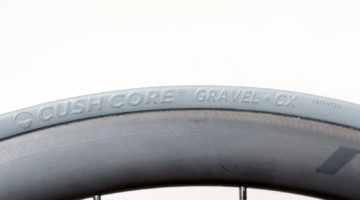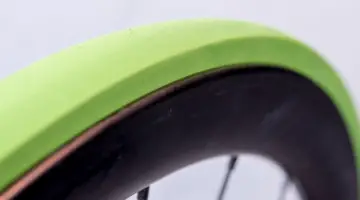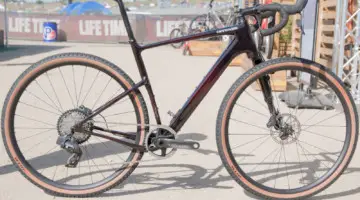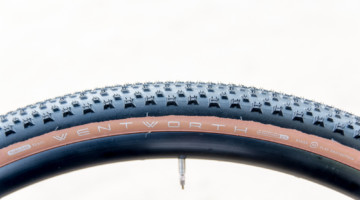If you've ever ridden tubeless tires, you probably know that the little details matter in creating a reliable setup.
Whether you think tubeless tires are only appropriate for mountain bikes, use them only in cyclocross training, or rely on them to finish fourth at CrossVegas or in the top 12 at Worlds, reliability in your setup puts a lot of pressure on your oft-neglected tubeless valve.
Despite their small stature, there are several details of tubeless valves worth considering. Each represents a potential area for failure. We've heard them all before, and experienced most of them:
- Sealant leaking from the rim's valve hole due to an ill-fitting rubber grommet
- Clogged valve cores
- Stuck nut preventing valve removal when you want to insert a tube out on the trail
- Broken valves during pumping, or while removing a pump head
- Valves that sit taller than rim beads
- Difficult tire seating due to restrictive bore diameters
- Lost races due to heavy, non-color coordinated valves
Okay, maybe we've never heard or experienced the last one, but we won't diminish the confidence a touch of color or shedding a few grams might offer a details-obsessed racer.
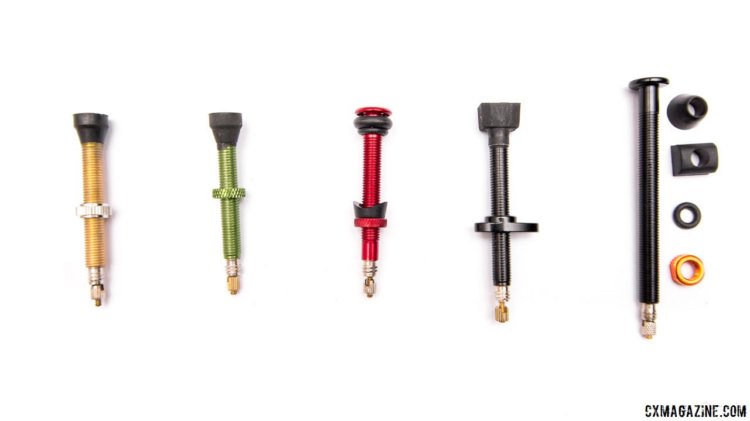
Not all tubeless valves are the same, and different companies take different approaches to materials, fitting components and of course, colors. From L to R: standard brass tubeless valve, Slime's STR alloy valve, American Classic's alloy valve, Boyd's alloy valve with wingnuts, and Orange Seal's new RVC valve. Tubeless tire valve comparison and review. © Cyclocross Magazine
Sure, tubeless valves come in different materials, lengths and colors, but even bore diameters vary greatly, which can impact the speed and volume of the blast of air from your compressor or charging pump.
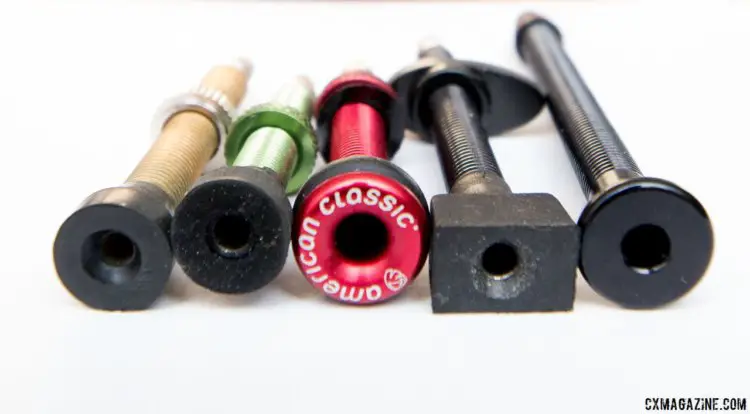
Bore diameter matters when you're trying to seat a loose tire with a charging pump or compressor. From L to R: "standard" brass valve, Slime alloy, American Classic alloy, Boyd Cycling alloy, Orange Seal alloy. © Cyclocross Magazine
Thankfully there are several companies working hard to address the other issues, and today, for Mechanical Monday, we're taking a close-up look at some tubeless valve options from Slime, American Classic, Boyd and a new design just released by Orange Seal. See the slideshow below.





















